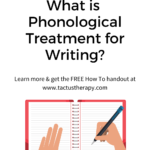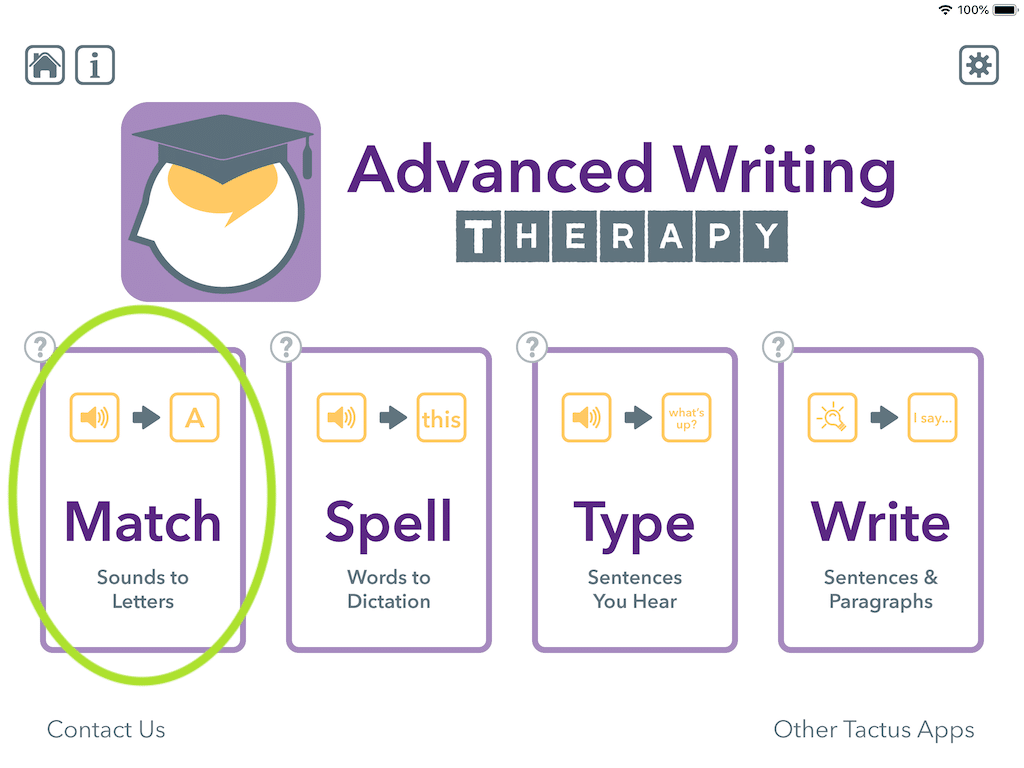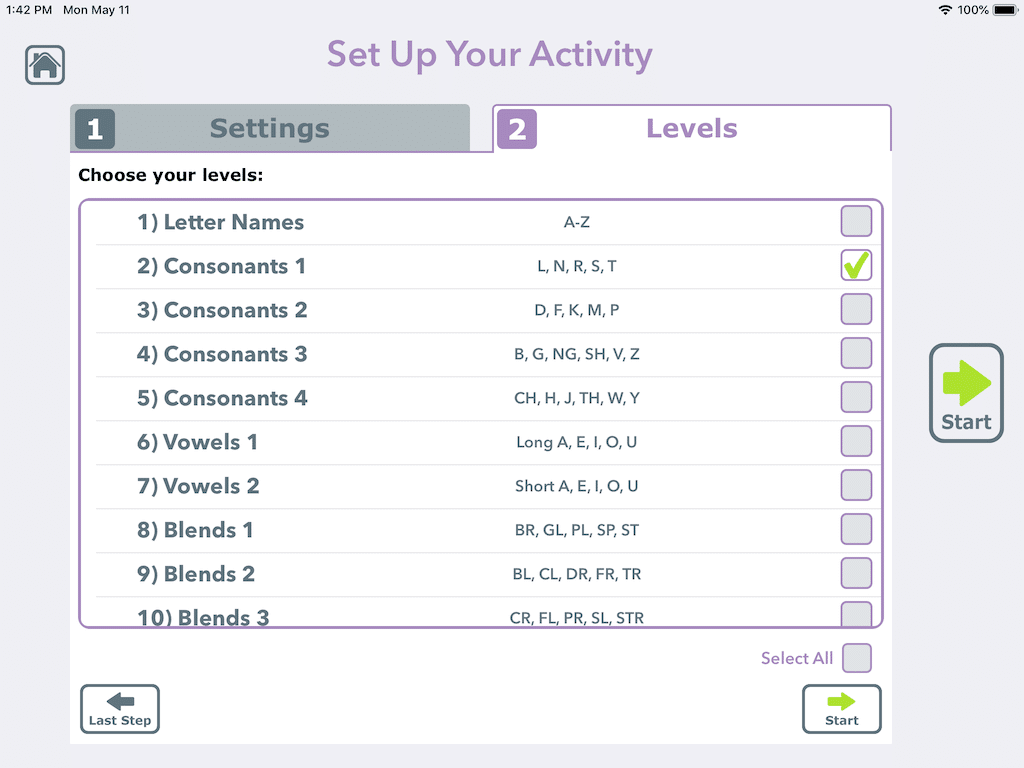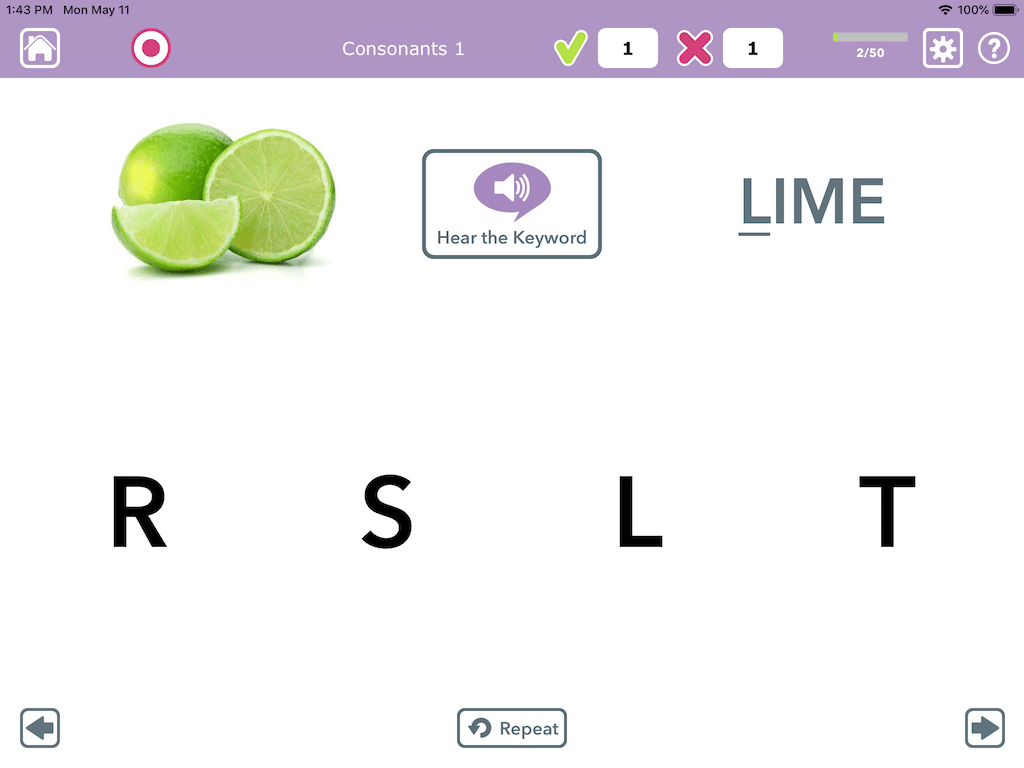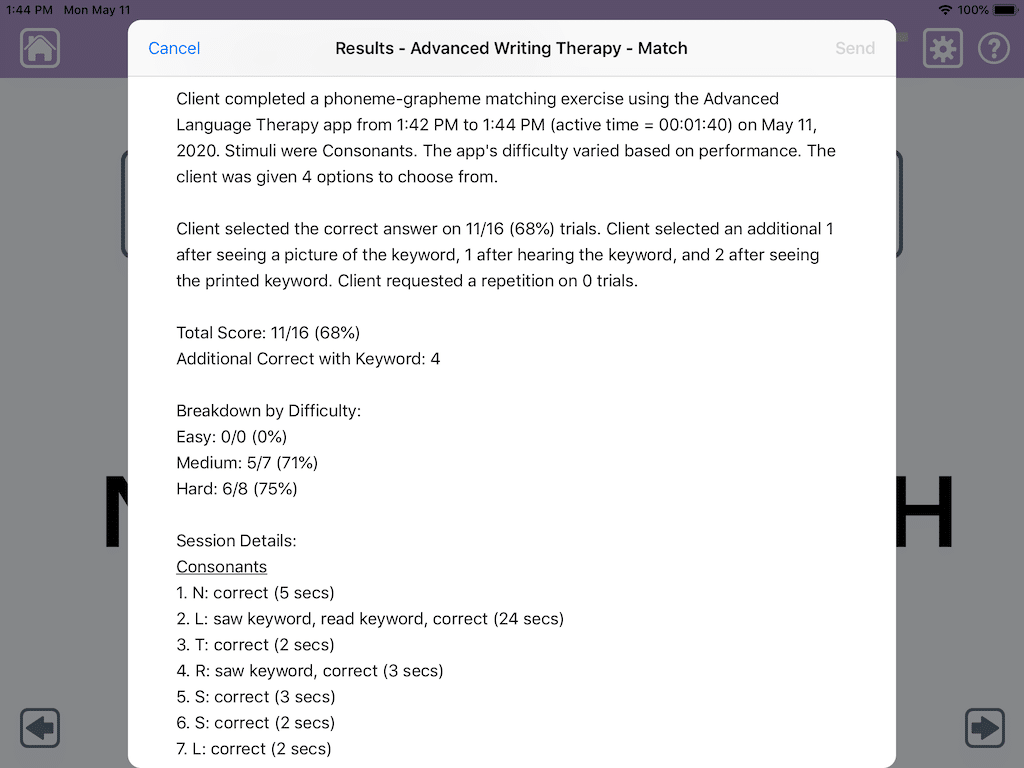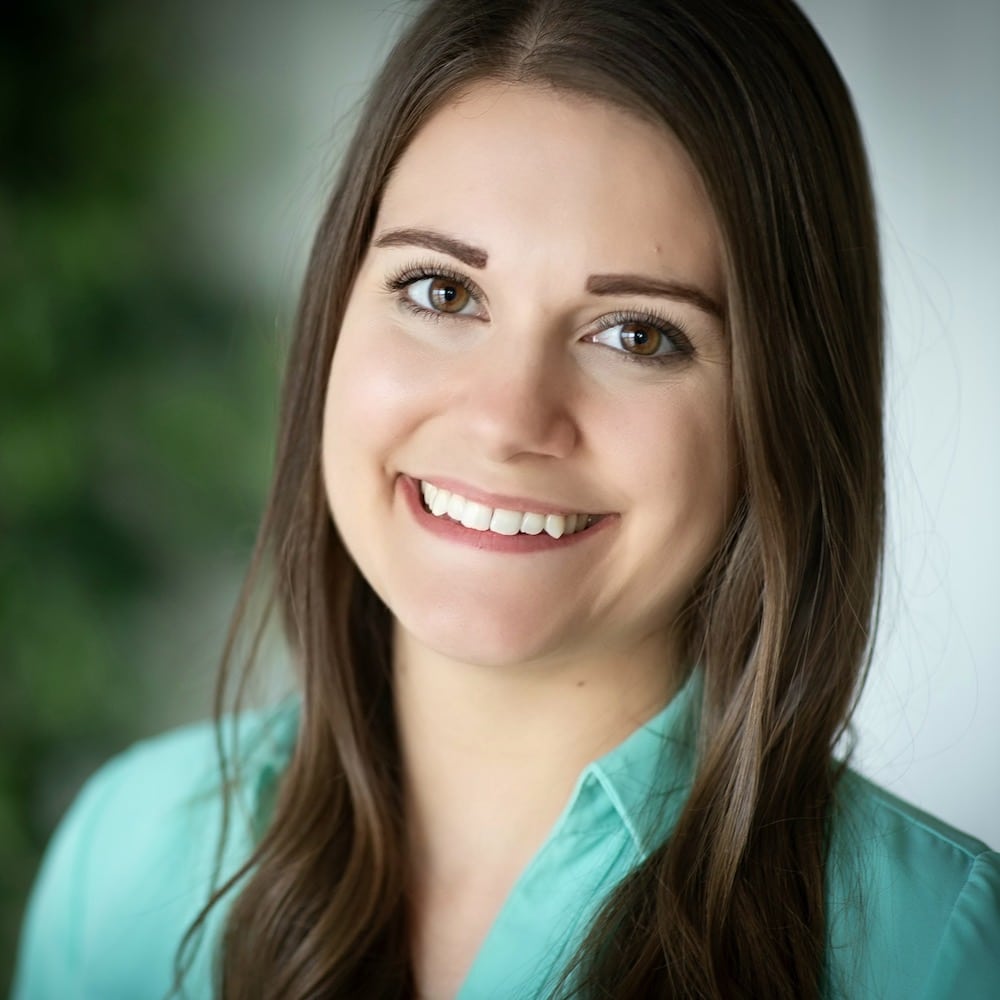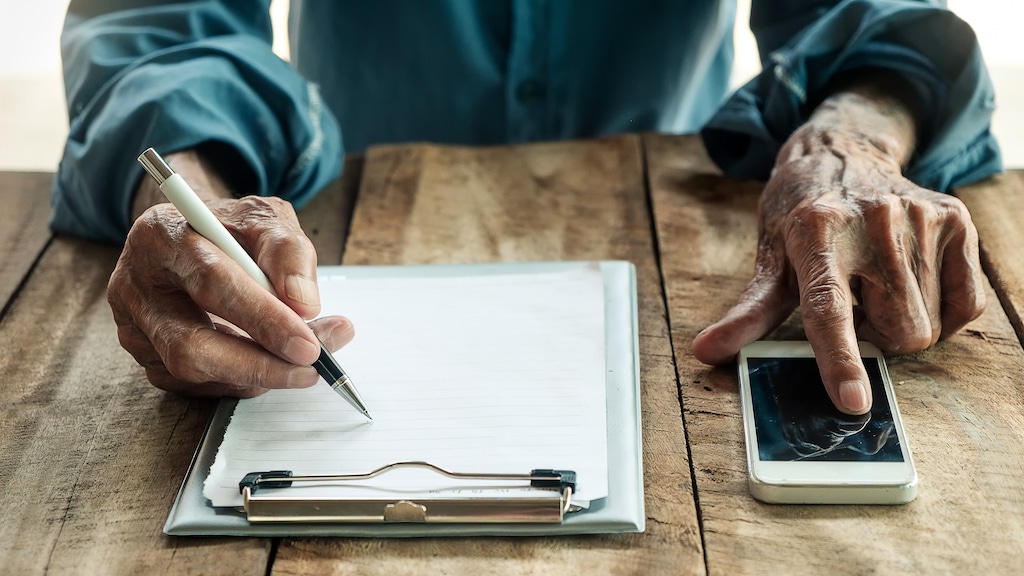How To:
Phonological Treatment for Writing
5 min read
Back when you were learning to read, you may have been taught that the letter B makes the “buh” sound, like in “boot.” This is known as letter-to-sound correspondence, or more technically, grapheme-to-phoneme correspondence. You then used this information when you sounded out words you were reading, and then in reverse when figuring out how to spell words. But when people develop aphasia after a stroke, they may lose this knowledge. This can make it very difficult to read or write.
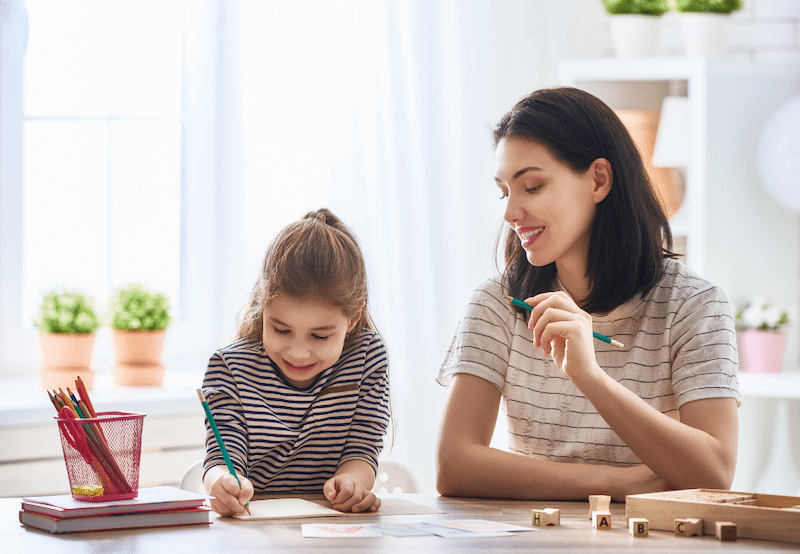
The Treatment: Phonological Treatment
Phonological treatment is used to improve sound-to-letter and letter-to-sound correspondence to improve agraphia (difficulty writing) due to aphasia. It targets written expression at the word-level by enhancing phonological processing skills.
Phonological treatment is the middle step in a three-step treatment sequence developed by Dr. Pélagie Beeson’s lab at the University of Arizona. We’ve already covered the first step: Anagram, Copy, and Recall Treatment (ACRT) in another article.
Who Would Benefit from Phonological Treatment for Written Expression?
Phonological treatment has been found to be an effective treatment for individuals with non-fluent aphasia and anomic aphasia with phonological agraphia or surface agraphia.
Before clients can begin treatment, they must first be able to spell keywords that begin with the initial sounds/phonemes being trained. If the client is unable to complete this task, it is recommended they start with ACRT to train a set of keywords. Once mastered, phonological treatment can begin.
A client may be appropriate for phonological treatment if they demonstrate difficulty with reading and spelling non-words, deleting or replacing phonemes in a written word, or translating phonemes to graphemes. These individuals may frequently demonstrate phonemic paraphasias in speech as well.
What You’ll Need to Do Phonological Treatment
Phonological treatment can be completed with minimal preparation and materials. The clinician will need:
Download this “How To” guide now.
Get your free PDF on how to do Phonological Treatment with and without apps. Includes a list of keywords used in the Advanced Writing Therapy app.
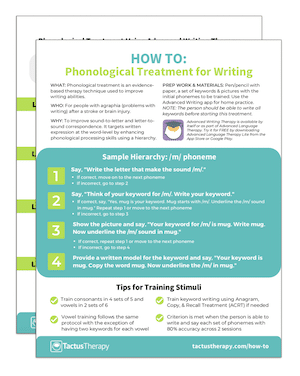
In addition to receiving your free download, you will also be added to our mailing list. You can unsubscribe at any time. Please make sure you read our Privacy Policy and Terms & Conditions.
How to Start Phonological Treatment
Phonological treatment uses a cueing hierarchy to train targeted graphemes and phonemes. Here’s an example of sound-to-letter training using the phoneme /m/:
Consonants should be trained using 4 sets of 5 consonants. Criterion is met when the client is able to correctly write and say each set of phonemes with 80% accuracy over 2 sessions. For those with severe apraxia of speech, it’s enough to show mastery of sound-to-letter matching, as letter-to-sound may be too challenging.
Here’s a home practice video by SLP Christie Shultz from the Aphasia Research Project lab that shows how someone can practice their keywords at home using an unlisted video on YouTube provided by the clinician:
After establishing consonants, vowels are trained in 2 sets of 6. Vowel training will follow the same protocol as consonants with the exception of having two keywords for each vowel. This is because some vowels have more than one typical corresponding grapheme (e.g., ee and ea for /i/).
Here’s another home practice video all about vowels:
Continuing on with Phonological Treatment
Letter-to-sound training can then be completed using a similar hierarchy, showing the target grapheme to the client, and asking for the keyword for that letter. Get extra practice by creating a matching game by laying out a limited set of the keyword pictures. Ask the client to find the keyword for a sound you say.
After training all the phonemes, work begins learning to blend real words and non-words. The client hears a word, repeats it, and then writes the keyword for each sound they hear. They can then combine the target letter in each keyword to write the word or non-word.
Here’s a video of what real word blending looks like for homework:
If you’d like to see non-word blending, follow this link to another video.
This will get the person close to the correct spelling in most cases, or at least to a point that someone can read the word and make sense of it. But because English has so many irregular spellings, this won’t make for perfect writing. That’s where the third step in the writing treatment comes in: interactive treatment. Read more about interactive treatment here.
Phonological Treatment Using Advanced Writing Therapy
Did you know the Match activity in the Advanced Writing Therapy app was based on phonological treatment? That means it is the perfect companion for treatment and homework for clients.
Selected Resources & References
The University of Arizona provides resources for the phonological treatment protocol, including variations, and ways to implement homework. They also provide picture stimuli for clinician use. https://aphasia.sites.arizona.edu/content/10
For all 3 treatments in this series, along with a free assessment battery for reading and spelling, check out the Aphasia Research Project’s resources for professionals.
Beeson, P., Bayley, C., Shultz C., & Rising, K. (2018): Maximising recovery from aphasia with central and peripheral agraphia: The benefit of sequential treatments, Neuropsychological Rehabilitation, DOI: 10.1080/09602011.2017.1417873
Beeson, P., Rising, K., Demarco, A. T., Foley, T. H., & Rapcsak, S. Z. (2018). The nature and treatment of phonological text agraphia. Neuropsychological Rehabilitation, 28(4), 568-588. DOI:10.1080/09602011.2016.1199387 Full Text
Beeson, P. M., Rising, K., Kim, E. S., & Rapcsak, S. Z. (2010). A Treatment Sequence for Phonological Alexia/Agraphia. Journal of Speech, Language and Hearing Research, 53(2), 450. DOI:10.1044/1092-4388(2009/08-0229) Full Text
